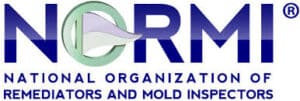Balancing Preservation and Energy Efficiency

The Radcliffe Institute for Advanced Study recently achieved LEED-NC v3 Gold certification* for its renovation of the historic Fay House, making it the oldest LEED certified building in the United States (the oldest LEED building in the world was built in 1453 and is located in Venice, Italy). Since its construction in 1807, the building’s lifespan has included use as a private residence for a succession of families, a girl’s boarding school, the beginning of Radcliffe College and its current use as the administrative center of the Radcliffe Institute for Advanced Study.
Since this was a major renovation to modify the interior to meet programmatic needs, current code and energy goals, the project provided a prime opportunity to closely evaluate the often synergistic, but occasionally competing priorities of historic preservation and sustainability. While Fay House has not undergone a major renovation since the 1890s, the building’s surroundings have developed and changed dramatically – from farmland and apple orchards to bustling Harvard Square. Similarly, design and construction priorities have expanded – the importance of maintaining historic architectural fabric and the imperative to address a building’s contributions to climate change are prominent topics of discussion.
Early in the project, during an initial sustainability goal-setting workshop, the project’s various stakeholders defined the key goals in alignment with Harvard’s Green Building Standards and the University’s aggressive greenhouse gas reduction goals. Preservation of the existing materials, which not only recognizes the significance of the architectural fabric, but also embodied energy, is an obvious synergy. The exterior façade was restored and over 85 percent of the building fabric was maintained. Evaluation of the envelope and structure was the most significant area where preservation and sustainability were carefully considered – such as restoring windows to maintain the aesthetic while improving efficiency, modifying interior walls to increase daylight, weatherizing the envelope and evaluating the feasibility of insulating the building. To avoid obtrusive mechanical equipment such as cooling towers, ground source heat pumps were selected as the means of heating and cooling the building.
Fay House is Radcliffe’s third LEED certification and the 85th LEED certification at Harvard. A case study and LEED scorecard for this project, as well as Harvard’s other LEED certified projects, can be found on the Harvard Green Building Resource.
Source: Written by Andrea Trimble for LEED.
- LEED (Leadership in Energy and Environmental Design) is an internationally recognized green building certification system. This process offers third-party verification that a building or community was designed and built using strategies aimed at reducing energy and water usage, promoting better indoor air quality, and improving quality of life.
Aspen Environmental professionals are licensed and insured and members of the National Organization of Remediators and Mold Inspectors (NORMI), the National Air Duct Cleaners Association (NADCA), and the Institute of Inspection Cleaning and Restoration Certification (IICRC).
For anything related to water damage cleanup, mold testing, mold removal, or air ducts, call Aspen at 978.328.0882. Or email [email protected].



